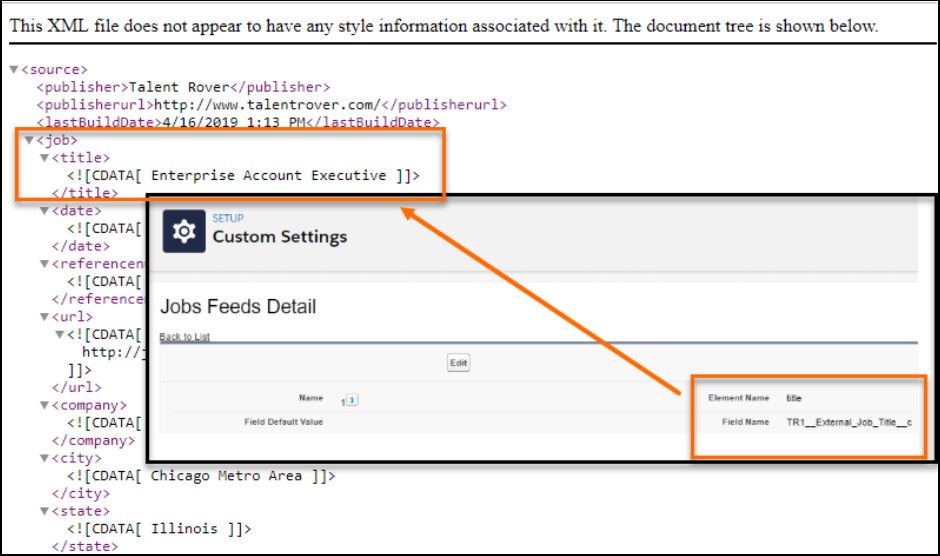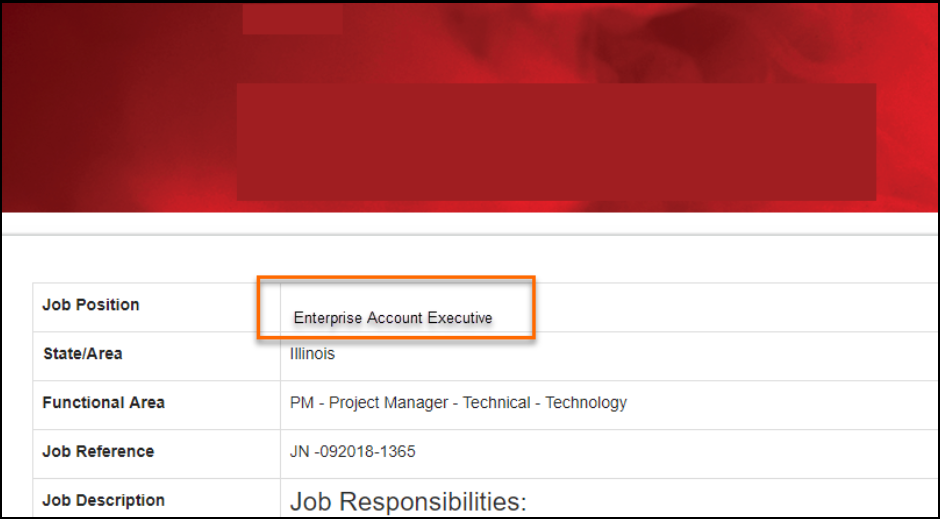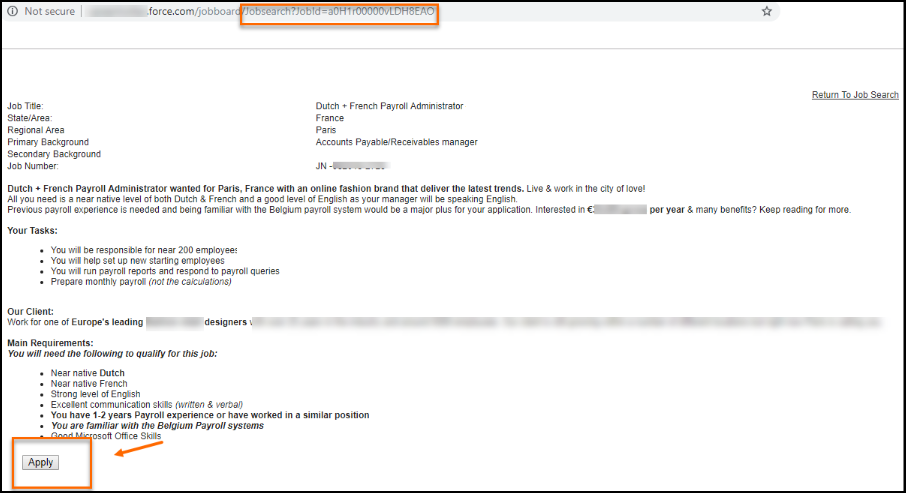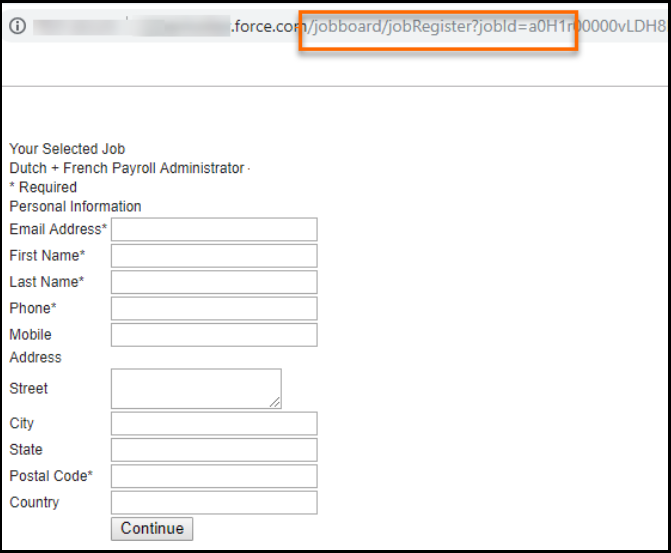Job Board Integration
Overview
With a Job Board![]() A website where open jobs are advertised integration, users are able to post Jobs externally so candidates
A website where open jobs are advertised integration, users are able to post Jobs externally so candidates![]() A person looking for a job. A candidate can also be referred to as a Job Seeker, Applicant, or Provider. can submit applications from the Job Board pages or your website. When an Application
A person looking for a job. A candidate can also be referred to as a Job Seeker, Applicant, or Provider. can submit applications from the Job Board pages or your website. When an Application![]() First stage of Job placement flow (Application> Submittal>Interview>Offer> Placement) is submitted, Candidate
First stage of Job placement flow (Application> Submittal>Interview>Offer> Placement) is submitted, Candidate![]() A person looking for a job. A candidate can also be referred to as a Job Seeker, Applicant, or Provider. Contact and Application records are created in your . This article familiarizes you with job board integrations and how they function.
A person looking for a job. A candidate can also be referred to as a Job Seeker, Applicant, or Provider. Contact and Application records are created in your . This article familiarizes you with job board integrations and how they function.
The Job Board integration is not part of the core package but is offered as a separate development option during the implementation process. For details around the cost of configuring the Job Board integration and customization options, please reach out to the Support Team or Sales Department.
The Job Board implementation can include:
- Hosting on Force.com pages
- XML
 Used to create custom markup languages in order to display information on the Internet. We use XML when sending jobs to Indeed for syndication. feed
Used to create custom markup languages in order to display information on the Internet. We use XML when sending jobs to Indeed for syndication. feed - Two registration pages
- Preset XML Job Board workflow
- Custom branding of the Job board with your logo, colors, buttons, drop-down menus, and other brand assets.
- Custom configuration of the Job board may incur additional hourly costs.
Option 1: Force.com Pages and an XML Feed
Configuration Overview
- Within Setup, create a Domain Name.
- Create a Site.
- Assign Permissions to the Guest Site Profile. This will be the anonymous user applying for jobs from the z board.
- Enable Visualforce pages.
- Assign CRED permissions on the Job, Contact, and objects.
- Enable field visibility for all fields on the Job object.
- Update relevant Custom Labels and Static Resources with new Job Board information.
- Style Customizations.
- Changes to the logo’s URL, favicon, and rights reserved in Job Template
 In Bullhorn Recruitment Cloud, this mainly refers to email templates page.
In Bullhorn Recruitment Cloud, this mainly refers to email templates page. - Create a Custom Setting for the Job Board.
- Map Job fields to the XML feed in Custom Settings > Properties > Jobs Feeds.
Requirements for Job Posting
Any Job record created in your can be posted externally once the below conditions are met:
- The Post Externally checkbox is selected.
- The name of the Job Board is selected in the Job Board picklist.
- The Job Status is not equal to Closed.

Job Field Mapping
Data from the Job record is sent to the XML feed based on the mapping configured in the Jobs Feed Custom Setting. The Job post will be created using the values captured by the XML feed.
In this example, the Job’s TR1__External_Job_Title__c field is mapped to the <title> tag in the XML feed.

Below is the standard field mapping to the XML feed. This can be customized using the Jobs Feed Custom Setting.
| TR1__Element_Name__c (XML Feed Tag) | TR1__Field_Name__c |
|---|---|
| description | TR1__Client |
| date | TR1__Open_Date__c |
| lastmodifieddate | LastModifiedDate |
| country | TR1__County__c |
| referencenumber | TR1__Job_Number__c |
| company |
TR1__Job_Board__c |
| category | TR1__Primary_Background__c |
| experience | TR1__Experience_Requirements__c |
| url | id |
| city | TR1__Regional_Area__c |
| state | TR1__State_Area__c |
| title | TR1__External_Job_Title__c |
| education | TR1__Education_Requirements__c |
| description | TR1__Client_description__c |
Job Board Pages
Once the Job Board Site has been created, two registration pages and a search page are available. These can be customized and embedded in your own website with custom development.
This is the Job Search page which shows every Job that is posted externally.
You can see the full Job post by clicking on the Job Title. Clicking the Apply button at the bottom of the Job Post page launches the Registration page. The Job object has package fields that are designed to be used for external posting, so you can have an internal and external title, as well as internal and external Job descriptions. Ensure that you map the correct field to the XML feed.
On the Job Register page, the Candidate is asked to enter personal information such as their name, email address, and address.
Once the mandatory fields are populated, clicking Continue navigates the Candidate to the second registration page. This page lets the Candidate upload a resume and finish applying for the Job.
Candidate Records and Applications
When a Candidate applies with a resume, we check if there is already a Candidate record in the with the same personal information. If none is found, a new record is created that includes the parsed resume.
If the Candidate applies without a resume and there isn’t an existing Contact record in the database, we create a Contact record with the data entered in the Registration form.
In both cases, an Application record is also created for that Candidate related to the relevant Job.
Option 2: XML Feed Only
If you don’t want to redirect from your own JobBoard or website to a force.com site, you can use HTTP REST services. With the HTTP REST services, you can create your own HTML registration form and that can pass the XML feed information as a JSON body to endpoint.
We provide an XML feed that contains all the necessary information to post jobs externally and to receive applications. The third party website administrator has to 'consume' the XML feed. Our XML feed allows Job posts and HTTP REST services to receive Applications from a third party website.
No specific knowledge of the Salesforce platform is required because our services follow Service-Oriented Architecture (SOA) standards. The third party developer is required to know how to parse XML and how to post a JSON payload on the HTTP Rest service. These are basics of SOA and developers doing EAI integrations would be familiar with these concepts.
Sample XML feed: http://trideas.force.com/jobboard/jobsfeed?jobboard=talentrover




